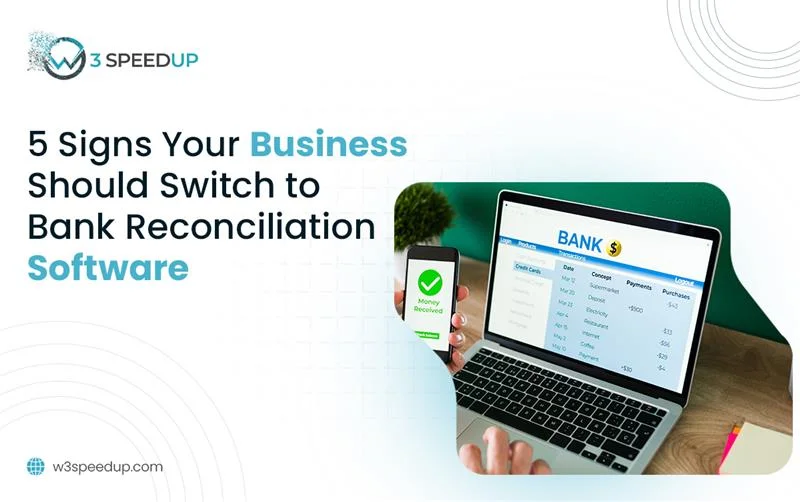IIf your finance department is still using Excel for manually downloading transactions to reconcile and close the books, you are not alone. But perhaps it’s a situation that is seeming to be at a tipping point.
Initially, performing manual bank reconciling may appear manageable; however, as your business scales, inefficiencies and risks increase almost on a non-linear basis. Delayed closes, accumulated errors, and siloed data hamper any reliable maintenance of financial records. Bank reconciliation software is the answer to this dilemma as it features automation, real-time matching, and constant control.
Chapter 1: You’re Struggling with High Transaction Volumes
As your business grows, so does transaction complexity: add in more accounts, more payment methods, and greater volumes, and there’s more to go wrong.
Hours spent by teams manually importing and matching thousands of transactions is not only inefficient; it is fast becoming unsustainable. Such manual endeavours just cannot withstand any pace or volume of data generated by current banking and ERP architectures.
Bank reconciliation software eliminates that long manual processing by automating the data feed into the system and rule-based matching, processing hundreds, even thousands, of transactions in minutes to allow teams to concentrate on higher-value tasks, which greatly enhances accuracy.
- Advantages of bank reconciliation software:
- Fast processing of heavy transaction volumes
- Less reliance on spreadsheets and manual processes
- Scalable systems without adding headcount
Chapter 2: Reconciliations Are Siloed and Inconsistent
Reconciling anything for accuracy and compliance becomes almost impossible with non-standard reconciliation practices followed by a different team or regional office or a subsidiary.
One team may work with its custom Excel template while another relies on an approach of emails and screenshots. These fragmented approaches create inconsistency, thus increasing the risk and lowering the audit readiness.
With bank reconciliation software in place, the benefits include:-
- A common process across all countries/entities
- Central access and version-controlled documents
- Dashboards for real-time performance monitoring
This would therefore further enhance internal controls while supporting more scalable, auditable workflows across departments.
Chapter 3: You’re Constantly Chasing Down Discrepancies
When an entire team spends hours finding out why the books do not match with the bank statement, then it is a flashing warning sign.
The most common culprits are timing differences, missing entries, or duplicate transactions. They are quite nightmarish to detect, especially with more bank accounts and complex payments because of too many accounts to check.
The longer the battle for the problem, the more room there is for reporting mistakes, fraud being missed, and closing delays. Bank reconciliation software completely automates the detection of mismatches and flags the issues in real time so that the time wasters no longer run reactive firefighting within their teams but proactive alerts and resolution workflows.
Perks are:
- Faster error detection
- Less likely to have fraud or non-compliance
- Free time to do strategic work by not doing clerical work
Chapter 4: Your Close Process Feels Like a Marathon
Every month-end seems to seep into another crisis. However, when that stretch runs into double digits due to the slow pace of reconciliations, you are burning time and accuracy while killing the confidence of executives in the business.
Manual reconciliation means a lot of spreadsheets are fragmented, relying heavily on antiquated knowledge, and copy-pasting is in chaos. All of which put you out of your deadline required time, reporting late, and the limited insight into your cash position just when you need it most.
Automated bank reconciliation allows reconciliations to run at any time rather than just month-end. The system pulls the transactions from both ERP and bank, matches them automatically, and reflects your cash position in real-time. It means faster close cycles and no surprises when it comes crunch-time.
- Benefits include:
- Continuous reconciliation is the end to month-end closing
- Enhanced visibility into cash movement in the month
- Confidence on deadlines for reporting
Chapter 5: Audits and Compliance Reviews Are a Headache
Could your team easily procure transaction trails, approval logs, and supporting documents upon being visited by the auditors.
If audit preparations feel like a mad dash, it’s probably because your reconciliation process is somewhat lacking clear documentation and/or transparency. Those in turn could create problems for most high regulation industries.
Our reconciliation software for banks keeps a complete trail ready for audit of each transaction, match, exception, and adjustment made. Built-in controls allow effortlessly retrievable approvals, timestamps, and documents at the click of a button.
Some of the main advantages include:-
- Reduced audit preparation time
- Clear separation of functions and approval workflows
- Ultimate transparency and traceability
Conclusion
In today’s tech-savvy world, no finance team should rely entirely on hand processes for an important function such as bank reconciliation. Frequent mismatches, holdups, and even inefficiencies are not minor issues; they indicate it is time to upgrade.
Bank reconciliation software performs repetitive tasks on your behalf, greatly alleviates the likelihood of human error, and enables you to report financials on time with utmost accuracy. Whenever even one of the aforementioned signs sounds familiar, stop struggling with spreadsheets and start paving the way for a prep-ready finance process.
 Christmas Mega Sale – Enjoy Up to 50% OFF on Every Plan!
Christmas Mega Sale – Enjoy Up to 50% OFF on Every Plan! 



